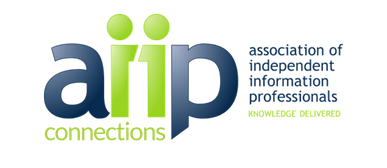We are AIIP: Charles Costa

In your bio, you describe yourself as a content strategist who focuses on customer service knowledge management. In two sentences, what do content strategists do?
Working as a content strategist in a customer service setting is analogous to being an air traffic controller who is focused on content development instead of planes. As the company changes its product and/or policies, content strategists identify the information impacted thereby and estimate the resources required to make adjustments.
In what kinds of situations do clients decide they need a content strategist?
As content strategy is a broad field, it’s important that companies first clearly identify the goals and objectives they are looking to achieve. In the context of knowledge management, clients generally turn to content strategists when they need assistance to develop frameworks to simplify content management (information governance) or when they are looking to make information more accessible across the organization by simplifying the structure of the information.
For example, a company may have a wiki for employee onboarding with thousands of pages of information created over the years. A content strategist can help improve company operations by interviewing relevant stakeholders to understand how they access onboarding information, what information they need, and their general ways of working.
When combined with usage data from the wiki software, the strategist can identify information to archive or consolidate and can restructure pages such that professionals can easily access their content without deviating from their daily routines.
What do people need to succeed as a content strategist?
In my opinion, the most important skill for content strategists is being able to connect the dots. In the context of knowledge management, content strategists are required to attend project meetings and develop impact assessments based on product and/or policy changes. Oftentimes the strategist must ask clarifying questions and consider the downstream impact on other features.
Another important skill is having product knowledge and being able to understand how others interact with a given solution. For example, customer service knowledge management requires the strategist to assess how a customer service agent operates (e.g. processes they must follow, responses they must give to standard customer queries, internal knowledge they should have) and take the end user’s experience into consideration.
One of the most important lessons I’ve learned through my career is that there is no clear pathway to achieve an objective. The bulk of my career was in content marketing and content design. After working in product marketing for a couple of years at eBay, I landed in the content strategy domain because I saw an internal transfer opportunity that seemed interesting, and it was my ability to understand the voice of the customer that led me to make the switch.
If you’re the type of person who enjoys connecting the dots, picking apart how people interact with technology and are great at synthesizing insights from customer feedback, content strategy can be a great field for you.
While I don’t believe a specific degree is required to get into the profession (say, a master of library and information science (MLIS)), I feel the degree provides invaluable skills, and it has helped me grow professionally. That said, practical knowledge is essential for professional development, for example how to integrate artificial intelligence into daily workflows.
Charles Costa is currently a senior content strategist at eBay who focuses on financial services and regulations, along with automated email. In addition to this, he is a student member of the AIIP and is currently working towards a master of library and information science at San Jose State University. He is based in San Mateo, California but has worked with clients and teams across the globe.





